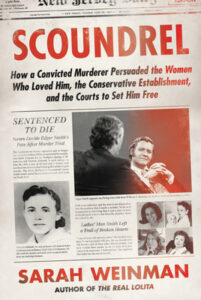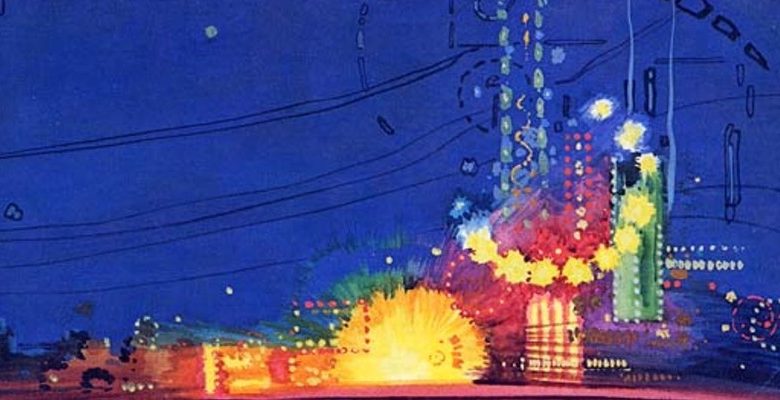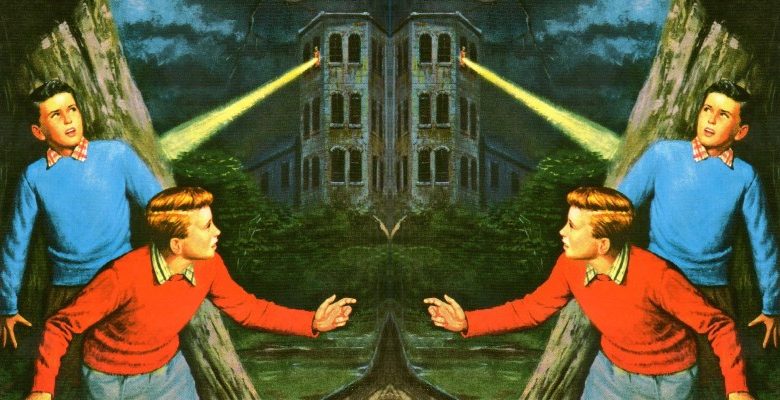[ad_1]
The following is excerpted from the first chapter of Sarah Weinman’s new book Scoundrel: How a Convicted Murderer Persuaded the Women Who Loved Him, the Conservative Establishment, and the Courts to Set Him Free, published by Ecco on February 22, 2022.
___________________________________
First, Vickie.
She was the Zielinskis’ second child. Mary Faye was the eldest, given the same first name as her mother and grandmother. Victoria Ann arrived three years after her sister, born on September 6, 1941. Then came Myrna, two years later, and finally, a couple of years after that, Anthony, Jr. The Zielinskis met, married, and started their family in Honesdale, Pennsylvania, and had moved to Ramsey, New Jersey—after a short stint in Hoboken—when Vickie was seven or eight. Anthony’s and Mary’s ancestors had come from Poland and Austria, respectively, earlier in the twentieth century.
A nuclear family, yes. A happy one? The record says otherwise. Vickie complained about her father to her friends, usually about his curfew enforcement—always 11:00 p.m., and she had to call home if she was to be late—and sometimes about his constant drinking. Her complaints occasionally carried whispers of familial violence. That more disturbing undertone would prove important later, as would so much about what Vickie did or didn’t do, what she thought or didn’t think, what she wanted or didn’t want.
 Strip all those suppositions away, and what’s left is an adolescent girl faring well by 1950s standards. “Just a kid,” insisted her best friend, Barbara Nixon, describing Vickie more than 6 decades later. Which, at age 15, a shade over 5 feet and a little more than 110 pounds, was almost certainly true.
Strip all those suppositions away, and what’s left is an adolescent girl faring well by 1950s standards. “Just a kid,” insisted her best friend, Barbara Nixon, describing Vickie more than 6 decades later. Which, at age 15, a shade over 5 feet and a little more than 110 pounds, was almost certainly true.
Vickie was an honor roll student in her freshman year at Ramsey High School. She took her studies seriously and was particularly keen on learning German. The summer before her sophomore year, she split her time between Ramsey and her birthplace of Honesdale, staying with her aunt Anna, her mother’s sister.
In tenth grade, Vickie’s marks started to slide. She seemed bored and distracted in class and was often late because she loved to socialize with her friends during the breaks. Vickie’s homeroom teacher, Emily Gloekler, found none of those things too worrying, though. She told the Paterson Evening News that Vickie’s grade drop had been “typical of sophomores, who like to enjoy themselves.” Charles Schanz, the vice principal at Ramsey High, added, “She was the type who—when they say hello . . . really meant it and are happy to say it.”
And Vickie did enjoy herself. Friday nights she spent at the roller rink in Paramus or at the Corral, a hangout for Ramsey teenagers to dance to jukebox tunes. She did not shy away from having fun, though weekend dates with boys and young men never went past her strict curfew. She might flirt with boys she knew, tease them and kid around with them, but she wasn’t known to behave that way with strangers. In early February 1957, Vickie went out with a boy who had a bottle of beer in his car. “I won’t go with you unless you break that thing,” Vickie admonished him. He proceeded to smash the bottle.
One unnamed girlfriend complicated the picture with what she told the Bergen Record after Vickie was killed. The friend said Vickie had changed somewhat since the beginning of the year, suggesting that she was “wilder than she used to be”—not wild enough to get into a car with a stranger, of course, but out of step with her earlier self. The kind of girl who became the subject of lurid rumors that she fooled around with older boys.
One of the last photos of Vickie shows her standing in front of a white door. The camera peers up at her from a low angle. She holds a pair of figure skates in her left hand, the wrist adorned with a white gold Wittnauer watch. Her right hand rests on her hip—a typical pose, evident in other photos taken in Vickie’s teen years—while her left leg is bent slightly at the knee. She is clad in dark penny loafers, white socks that stop halfway up her shins, a white turtleneck sweater and a dark skirt whose flared hem brushes against her thighs; her expression is a Rorschach test for whatever one wishes to read into it.
She could be defiant or playful. Coy or confident. Childlike or dangerously mature. The gap between her front teeth, plainly visible in photos from earlier in her childhood, is harder to see, and so she seems to teeter on the edge between self-conscious and assured. In the photo, at least, she radiates promise of something far larger than whatever future seemed possible within the walls of her yellow-painted home at 496 Wyckoff Avenue.
What kind of life was in store for Victoria Zielinski? Would she have moved away from Bergen County across the Hudson River to Manhattan, that tiny isle bursting with outsize dreams, ready to spit out those who couldn’t hack it? Or would she have fled the East Coast altogether for somewhere more far flung?
These questions would never be answered.
Fourteen hours before her body was discovered, the Zielinskis had been eating dinner and Vickie had been talking about going to her best friend Barbara Nixon’s house to study. She and her younger sister, Myrna arranged to meet at a spot halfway between the houses and walk the rest of the way home together. But when Myrna showed up, there was no Vickie. She went to the Nixons’ house, and they reported that Vickie had already left.
“Where is Vickie?” her mother asked when Myrna finally walked in the door after nine PM.
Myrna had no answer. They waited an hour, and then another. Her mother didn’t want to wake her husband up quite yet. He’d gone to sleep not long after Vickie had left the house, exhausted from his work as a truck driver for the borough of Ramsey, and had to be up early in the morning.
At midnight, when Vickie was an hour late for her curfew, Mary went upstairs and woke up Anthony. He immediately left in his eldest daughter’s car and began to search for Vickie without any luck. He and his wife would stay up the entire night, worrying, fearing the worst, hoping for the best.
The next morning, the Zielinskis went out again to find their daughter. They stopped by a neighbor’s house and discovered Vickie’s scarf close to a sand pit. Mary went in to use the phone. Anthony stopped the car when he saw something on the ground. Here was a black loafer. There was one of the red gloves Vickie had been wearing. Then Anthony found her necklace, the silver chain that should have been around her neck but now lay in a sand pit off Fardale Avenue.
At 9:20 AM, Mahwah Police Department captain Edmund Wickham pulled into the driveway. The police captain told Mary to stand by the Zielinskis’ car and “not to let any traffic go by” lest the crime scene be corrupted. He and Anthony headed back to the sand pit to continue searching. Wickham started walking slowly toward the lane, where he noticed a trail of tire tracks leading to the pit. They followed the tracks toward the pit, which was about 250 feet from the road. Anthony noticed blood and footprints on the ground and then spotted the other black loafer.
And then, at the bottom of the embankment, Vickie.
To her father, Victoria Zielinski had been the “jolliest, nicest, smilingest kid in the world.” To Myrna, Vickie had been someone to look up to and to emulate. Now someone had destroyed her.
The tragedy of early, violent death is that it strips away the person and leaves only the act, the making of the dead girl, rather than the celebration of the lived life. The killer has the power. The one who dies loses it all. Victoria Zielinski not only lost her future, her power, and her promise, she lost her existence, overridden by the needs and wants and desires of the man who murdered her.
________________________________

From the book SCOUNDREL by Sarah Weinman, published this month by Ecco. Copyright © 2022 by Sarah Weinman.
[ad_2]






